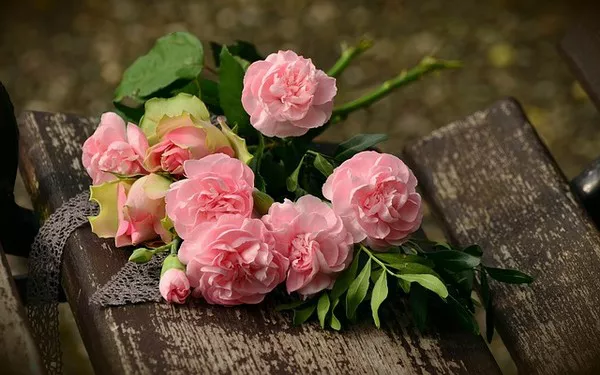Valentine’s Day, celebrated annually on February 14th, is a day dedicated to expressing love and affection. Across the globe, this occasion is marked by various customs and traditions, with one of the most enduring being the exchange of flowers. From vibrant roses to delicate lilies, bouquets become emblematic tokens of affection. But why do we give flowers on Valentine’s Day? Delving into history, culture, and symbolism unveils the deep-rooted significance behind this timeless gesture.
Historical Roots and Cultural Significance
The association between Valentine’s Day and floral exchanges traces back centuries, intertwining with both historical events and cultural practices. One of the most prevailing legends dates back to ancient Rome, where Valentine, a Christian martyr, defied Emperor Claudius II’s decree banning marriages for young men. Valentine clandestinely performed marriages for young lovers, leading to his eventual martyrdom. It’s believed that before his execution, Valentine sent a letter to the jailer’s daughter signed “from your Valentine,” thus establishing the tradition of exchanging love notes on this day.
Moreover, the Roman festival of Lupercalia, celebrated from February 13th to 15th, is also linked to Valentine’s Day traditions. During Lupercalia, men would draw women’s names in a lottery, pairing them as partners for the festival’s duration. This matchmaking practice echoes the modern-day exchange of Valentine’s Day cards and gifts, including flowers, as gestures of affection.
Over time, these historical threads have woven into the cultural fabric of Valentine’s Day, shaping the customs we observe today. The act of giving flowers has emerged as a quintessential expression of love, transcending borders and languages.
Symbolism of Flowers in Love
Flowers possess a language of their own, speaking volumes without uttering a single word. Each bloom carries its own symbolism, making them powerful messengers of emotion. When selected thoughtfully, flowers convey sentiments that words often fail to articulate.
Roses: The Epitome of Love
Among the myriad of floral choices, roses reign supreme as the quintessential symbol of love and romance. The red rose, in particular, has become synonymous with passion and desire, making it a staple of Valentine’s Day bouquets. Its velvety petals and enchanting fragrance evoke feelings of love and admiration, making it the perfect expression of heartfelt affection.
Beyond their aesthetic appeal, roses carry rich symbolism rooted in mythology and folklore. In Greek mythology, the rose was associated with Aphrodite, the goddess of love, beauty, and desire. Legend has it that when Aphrodite’s tears fell to the ground, they transformed into exquisite roses, imbuing the flower with divine significance.
Lilies: Purity and Devotion
While roses dominate Valentine’s Day arrangements, other flowers also play significant roles in conveying love’s myriad facets. Lilies, with their elegant blooms and subtle fragrance, symbolize purity, virtue, and devotion. White lilies, in particular, are often associated with new beginnings and the purity of love, making them popular choices for expressing heartfelt sentiments on Valentine’s Day.
Tulips: Declarations of Love
Tulips, with their vibrant hues and graceful appearance, offer a refreshing alternative to traditional Valentine’s Day blooms. Originating from Persia and Turkey, tulips have long been associated with love and romance. In the language of flowers, different colored tulips carry distinct meanings, with red tulips symbolizing true love and passion. By presenting tulips, individuals can declare their affection with a touch of elegance and sophistication.
Beyond Romance: Expressing Various Emotions
While Valentine’s Day is synonymous with romantic love, the tradition of giving flowers extends beyond amorous sentiments. Flowers possess the remarkable ability to convey a spectrum of emotions, from gratitude and admiration to sympathy and consolation. As such, they serve as versatile tokens of affection suitable for various relationships and occasions.
Expressing Gratitude and Admiration
Beyond romantic love, Valentine’s Day presents an opportunity to express gratitude and admiration for the cherished individuals in our lives. Whether it’s a parent, friend, or mentor, a bouquet of flowers can serve as a heartfelt gesture of appreciation, acknowledging the role they play in our lives.
Offering Comfort and Sympathy
In times of grief and loss, flowers offer solace and comfort to those experiencing sorrow. Sending sympathy flowers on Valentine’s Day can be a meaningful way to express compassion and support for those navigating difficult circumstances. Soft hues and gentle blooms convey a sense of peace and remembrance, honoring the memory of loved ones.
Conclusion
The tradition of giving flowers on Valentine’s Day transcends mere aesthetics, embodying the essence of love, affection, and emotional expression. Rooted in history, enriched by symbolism, and cherished across cultures, this timeless gesture continues to unite hearts and inspire meaningful connections. Whether it’s a single rose or an elaborate bouquet, the act of giving flowers serves as a poignant reminder of love’s enduring power to touch and transform lives.


